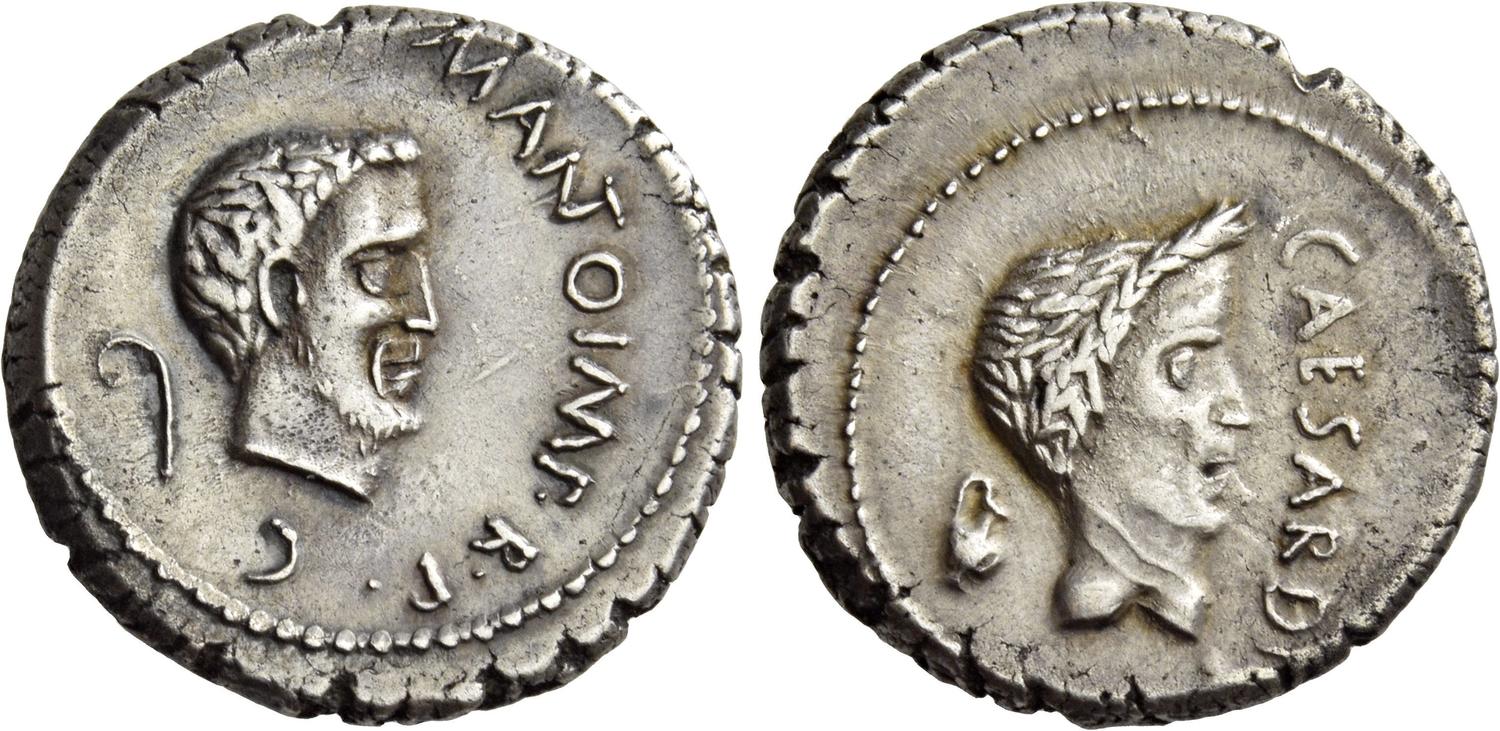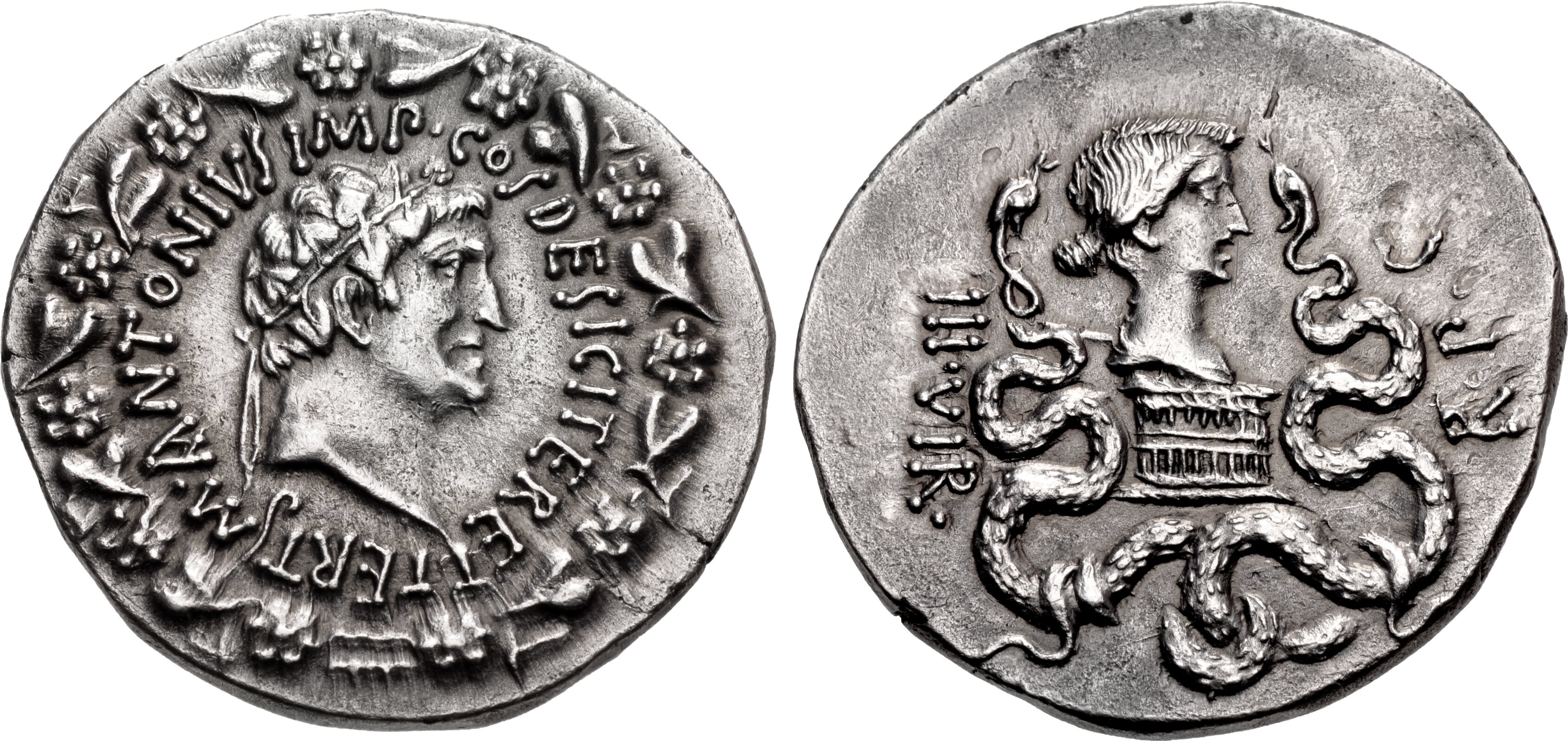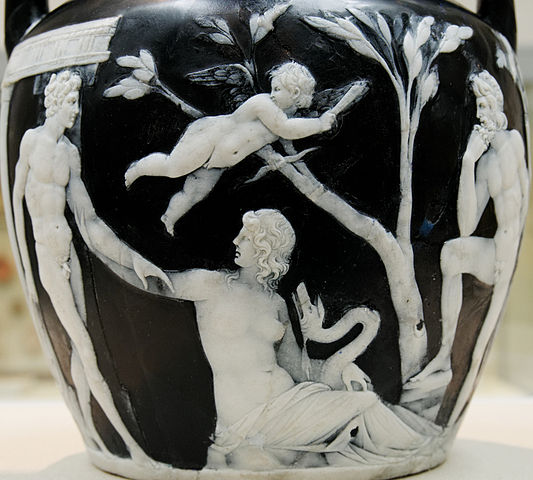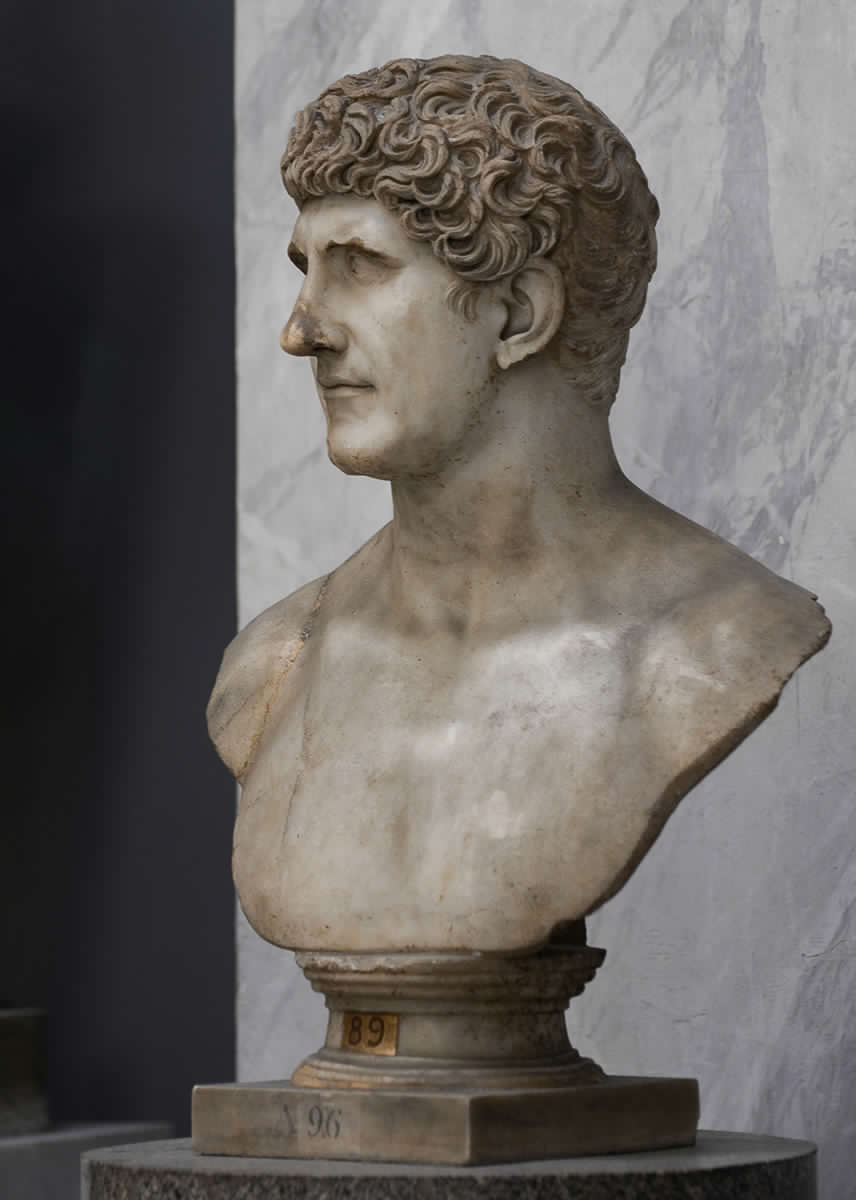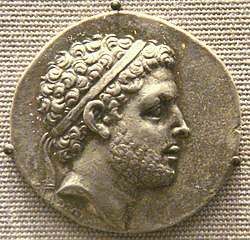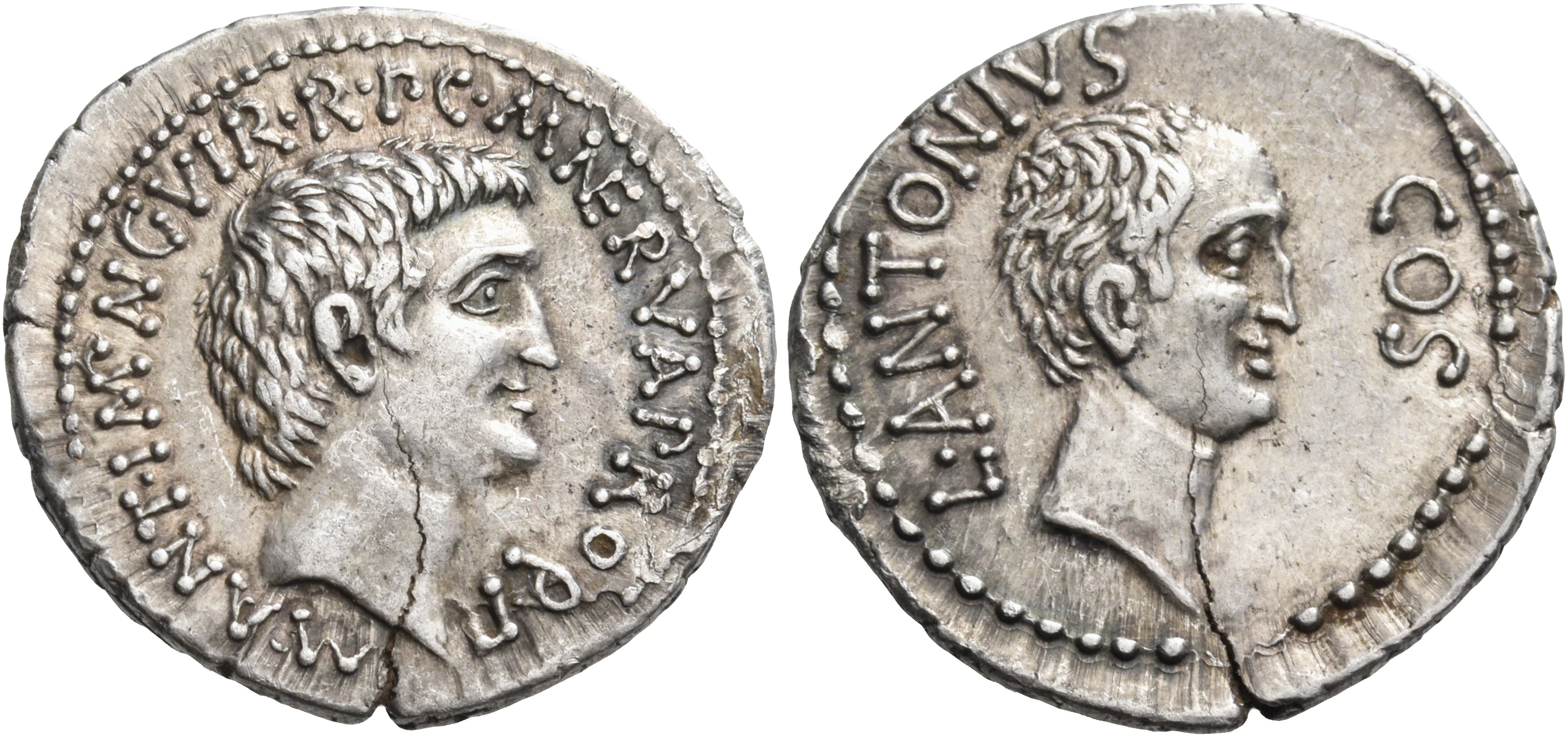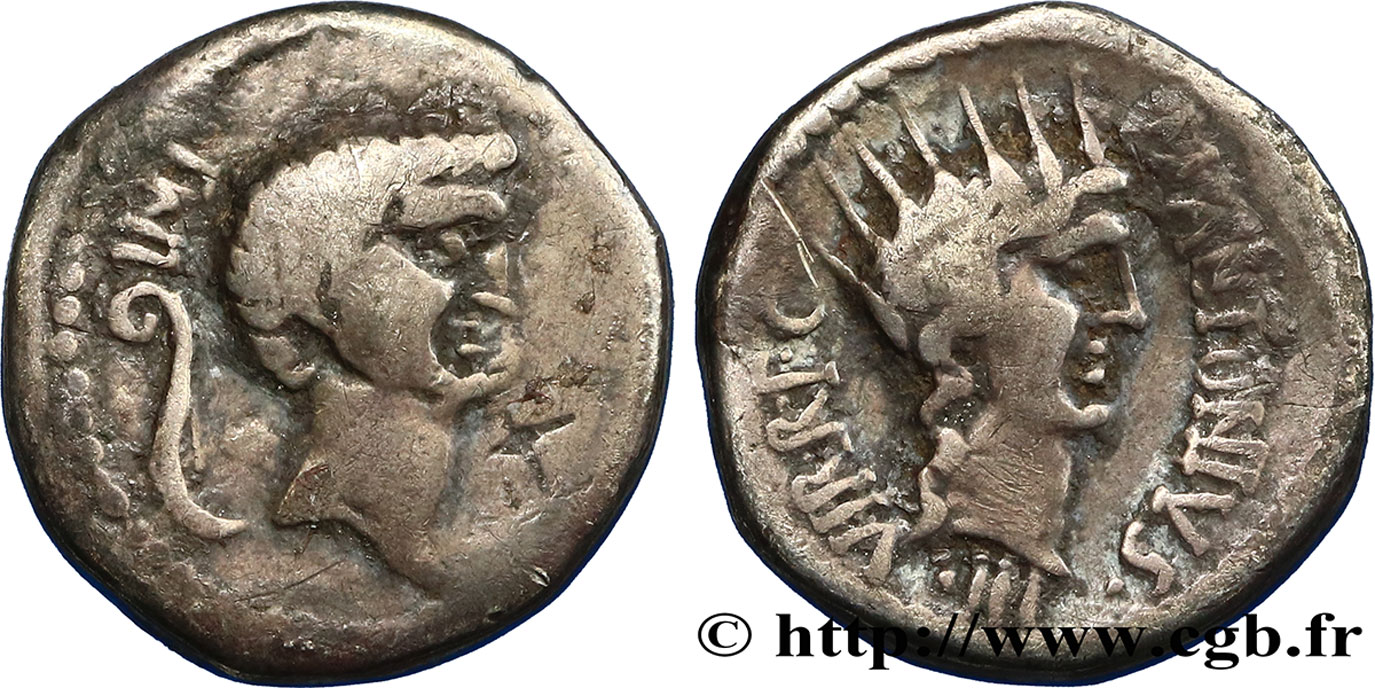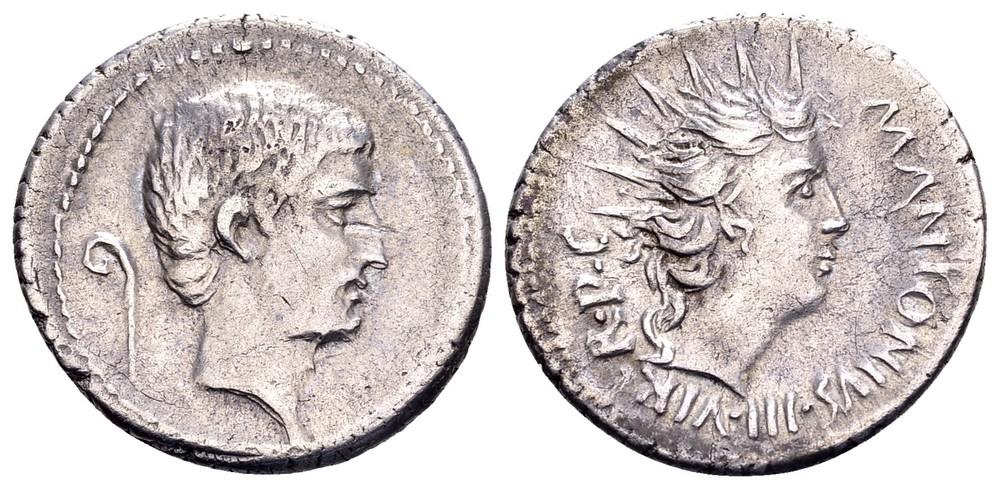A far better Ptolemaic coin from earlier (note the difference in quality to the Cleopatra era Egyptian coins, and the lack of consistency between them):
Another coin issued by Marcus Antonius from Gallia Cisalpina. The text reads "M. Antonius Imperator" and the obverse side "Caesar Divus". Gallia Cisalpina you say? Why yes, this is likely a coin from after Caesar's assassination when Marcus Antonius assumed the consulship and purged the assassins. Also notice the similarity in style to the well known Cleopatra & Antony coins (albeit the faces are portrayed differently). Same thing with the Antony & Octavian coin below. It uses a similar style but the image of Antony has been changed to conform to a new standard, which becomes more common until Octavian takes power. The style of image in the first one is more similar to the images on coins from Pompey and Caesar. Interestingly Antony has a beard in the earlier coin.
This one is interesting and with somewhat of a more subtle political nature (Marcus Antonius Imperator, but on the obverse side we can see Octavia above the shrine of Apollo, surrounded by serpents, the serpents are a symbol of Apollo, the patron deity of Augustus):
Now look at this far better coin of Marcus Antonius. It was likely made to commemorate the victory at Philippi and was specially designed. The beard is both a symbol of Hellenism and a symbol of Hercules. It makes reference to "Anton" who was the purported ancestor of the gens Antonia and the son of Hercules. The quality of this one really blows the rest out of the water and is comparable to later Imperial coins meant to commemorate victorious emperors.
Originally Posted by Walker & Higgs (2001), pp. 314-315












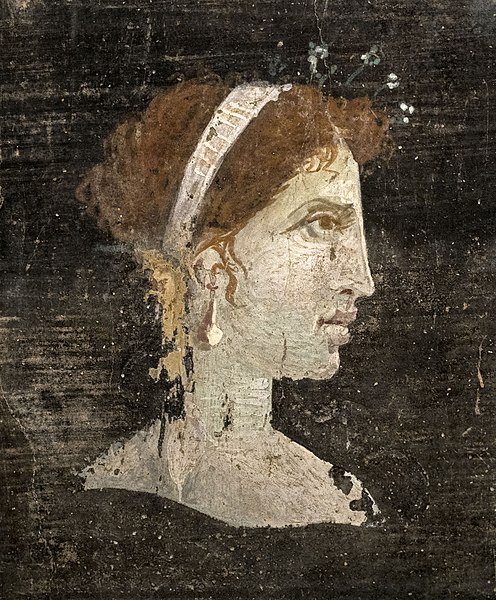


 Reply With Quote
Reply With Quote



































